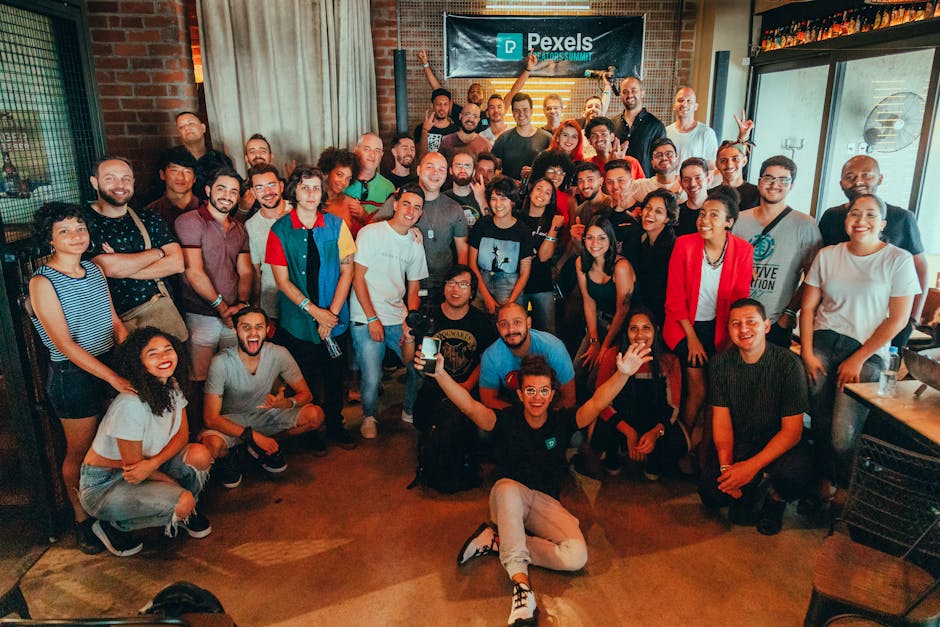Multi-stream monetization represents a pivotal shift in how digital content creators and businesses generate revenue. Moving beyond reliance on a single income source, this strategy involves simultaneously leveraging multiple channels and methods to maximize financial returns and build a resilient business model. It’s about casting a wider net, reaching diverse audiences, and optimizing every touchpoint for revenue generation.
This comprehensive guide will delve into the intricacies of what multi-stream monetization entails, exploring its core principles, the evolving market landscape, and the diverse methods employed by successful entities. We will examine the operational benefits, the critical role of mobile accessibility, and the profound impact on revenue growth. Furthermore, we’ll dissect expert strategies, showcase real-world examples, and provide actionable advice for implementation, ensuring a thorough understanding of this essential digital strategy.
Introduction to Multi-Stream Monetization
Multi-stream monetization is a strategic approach where content creators and businesses generate income from various sources simultaneously. This diversification is crucial in today’s dynamic digital economy, where relying on a single revenue stream can expose an entity to significant risk. By integrating multiple monetization channels, businesses can enhance financial stability, increase overall revenue potential, and adapt more effectively to market fluctuations.
The concept extends beyond simply having multiple products or services; it involves strategically aligning different revenue models with diverse audience segments and platform capabilities. For live content creators, this often means broadcasting simultaneously to multiple streaming platforms like Twitch, YouTube, and Facebook, and then applying distinct monetization strategies to each. This approach allows for maximum reach and optimized revenue opportunities by tapping into the unique characteristics and audience preferences of each platform Streams Charts.
Understanding multi-stream monetization requires an appreciation for its multifaceted nature. It’s not just about volume, but about intelligent integration and optimization. This strategy is particularly relevant in the live streaming sector, where creators can leverage tools that enable simultaneous broadcasting, thereby amplifying their presence and potential for income generation across the digital landscape WPStream.
The digital content economy is constantly evolving, and with it, the methods for generating income. Multi-stream monetization is a direct response to this evolution, offering a robust framework for sustainability and growth. It empowers creators and businesses to build a more predictable and substantial income foundation, moving away from the precariousness of single-source dependency.
This guide aims to provide a definitive resource for anyone looking to understand, implement, or optimize their multi-stream monetization strategy. From foundational concepts to advanced techniques, we will cover all aspects necessary to succeed in this complex yet rewarding domain.

The Core Concept of Multi-Stream Monetization
At its heart, multi-stream monetization is about creating a diversified revenue portfolio. Instead of placing all financial eggs in one basket, businesses and creators strategically cultivate multiple income channels that can operate independently or synergistically. This approach minimizes risk, as a downturn in one revenue stream can be offset by the stability or growth of others.
For content creators, especially those in live streaming, multi-stream monetization often refers to the practice of “multistreaming” – broadcasting content simultaneously to several platforms. This technical capability then opens the door to applying different monetization models specific to each platform. For example, a creator might use Twitch for subscriptions and donations, YouTube for ad revenue and channel memberships, and Facebook for sponsored content and direct sales, all from a single live broadcast Streams Charts.
The core concept revolves around leveraging the unique strengths of various platforms and revenue models. This includes understanding audience demographics on each platform, their preferred methods of engagement, and their willingness to pay for content or premium features. It’s a highly audience-centric strategy that prioritizes meeting users where they are and offering them value in a way that aligns with their consumption habits.
What are the fundamental principles driving multi-stream monetization?
- Diversification of Risk: Spreading income across multiple sources reduces vulnerability to changes in a single platform’s policies or audience preferences.
- Maximized Reach: Broadcasting or distributing content across various platforms ensures a wider audience reach, tapping into different demographics and communities.
- Optimized Revenue per Platform: Tailoring monetization strategies to the specific strengths and audience behaviors of each platform maximizes income potential from each channel.
- Enhanced Audience Engagement: Providing content on preferred platforms increases user convenience and can lead to higher engagement and loyalty.
- Scalability: A well-designed multi-stream strategy can be scaled up or down, allowing for flexible growth and adaptation to market demands.
This strategic diversification is not merely about adding more income streams; it’s about building a robust and sustainable financial ecosystem that can withstand market volatility and foster long-term growth. It requires careful planning, continuous analysis, and a deep understanding of both content creation and business fundamentals.
The Market Landscape and Growth of Multi-Stream Monetization
The market for multi-stream monetization is experiencing significant growth, driven by the increasing demand for real-time engagement and content accessibility across various digital platforms. In 2024-2025, multi-stream monetization is recognized as a rapidly expanding digital content strategy, enabling creators to reach wider and more diverse audiences simultaneously Streams Charts.
The landscape is shaped by several key factors. First, the proliferation of streaming platforms (Twitch, YouTube, Facebook Gaming, TikTok Live, etc.) means audiences are fragmented across different ecosystems. Multi-streaming directly addresses this by allowing creators to maintain a presence on all relevant platforms without having to choose just one. Second, the evolution of monetization tools and services, from built-in platform features to third-party solutions, has made it easier than ever for creators to implement diverse revenue models WPStream.
How is the market evolving?
- Increased Adoption by Creators: More individual creators and larger media entities are recognizing the benefits of multi-streaming to broaden their audience and diversify income.
- Technological Advancements: Streaming software and services are becoming more sophisticated, offering seamless multi-platform broadcasting and integrated monetization features.
- Growing Demand for Live Content: The global appetite for live video content, from gaming to educational workshops, continues to surge, creating more opportunities for monetization.
- Diversification of Revenue Models: Beyond traditional advertising, new models like subscriptions, direct donations, merchandise sales, and interactive fan engagement tools are becoming prevalent.
- Focus on Audience Engagement: Platforms and creators are increasingly prioritizing tools that foster deeper audience connections, which often translate into higher monetization potential.
While exact global market size figures for multi-stream monetization in 2024-2025 were not directly available in the provided sources, the consistent emphasis on its increasing adoption and the development of supporting technologies strongly indicate a robust growth trajectory. The market is characterized by innovation in how content is delivered and monetized, with a clear trend towards flexibility and creator empowerment LiveU Studio.
The market is further bolstered by the fact that multi-stream monetization saves on operational streaming costs while maximizing revenue. This dual benefit makes it an attractive strategy for both emerging and established content creators looking to build sustainable careers in the digital space Streams Charts.
| Growth Driver | Description | Impact on Monetization | Relevant Source |
|---|---|---|---|
| Audience Fragmentation | Users spread across multiple social and streaming platforms. | Necessitates multi-platform presence to capture full audience. | Streams Charts |
| Technological Advancements | Improved multi-streaming software and integrated tools. | Simplifies simultaneous broadcasting and revenue management. | WPStream |
| Diversified Revenue Models | Beyond ads: subscriptions, donations, sponsorships, merchandise. | Offers multiple income streams, reducing reliance on single method. | WPStream |
| Mobile Internet Usage | 92.3% of internet users access via mobile devices. | Requires mobile-compatible monetization solutions for broad reach. | WPStream |
Key Monetization Methods and Models
Multi-stream monetization thrives on the strategic application of various revenue methods and models, tailored to specific platforms and audience behaviors. The goal is to create a robust financial ecosystem that leverages the strengths of each income stream. Platforms like WPStream support multiple monetization models, including pay-per-view, subscription, advertisements, and donations, allowing creators to customize revenue streams per platform WPStream.
What are the primary monetization methods employed in a multi-stream strategy?
- Subscription-Based Models (SVOD): This involves recurring fees for access to exclusive content, premium features, or ad-free experiences. Examples include Netflix, Disney+, and Microsoft’s Office 365, which have successfully transitioned to recurring revenue models Mighty Networks. For streamers, this translates to platform-specific subscriptions like Twitch channel subscriptions or YouTube channel memberships.
- Advertising (AVOD): Revenue generated from displaying ads before, during, or after content. This can include pre-roll, mid-roll, or display ads. LiveU Studio emphasizes ad placement flexibility, including banners, commercial breaks, and sponsorships, to monetize live events effectively LiveU Studio. This is a common model on platforms like YouTube and Twitch.
- Donations and Tips: Direct financial contributions from viewers, often facilitated by platform features (e.g., Twitch Bits, YouTube Super Chat) or third-party services. This method relies heavily on audience engagement and loyalty Streams Charts.
- Pay-Per-View (PPV): Charging a one-time fee for access to specific live events, exclusive content, or premium streams. This is particularly effective for special events, concerts, or workshops WPStream.
- Freemium Models: Offering basic content or services for free while charging for premium features, advanced access, or an ad-free experience. This lowers the barrier to entry and encourages upgrades Mighty Networks.
- Sponsorships and Brand Deals: Collaborating with brands to promote products or services within content. This can involve dedicated segments, product placements, or sponsored streams. The ability to integrate multiple sponsorship banners and commercials further improves income potential LiveU Studio.
- Affiliate Marketing: Earning commissions by promoting products or services and driving sales through unique affiliate links. This is common for content creators reviewing products or offering recommendations Mighty Networks.
- Merchandise Sales: Selling branded physical or digital products (e.g., T-shirts, digital art, emotes) directly to the audience. This leverages fan loyalty and provides an additional revenue stream Streams Charts.
The key to successful multi-stream monetization is not just implementing these methods, but strategically combining them. For instance, balancing ad-supported content with subscription options can provide both passive income from high traffic and predictable recurring revenue inoRain. Each method contributes to a diversified income, supporting long-term sustainability and future projects Streams Charts.

Operational Efficiency and Cost Savings in Multi-Streaming
One of the significant advantages of multi-stream monetization, particularly in the context of live content, is the substantial improvement in operational efficiency and the potential for cost savings. Traditionally, broadcasting to multiple platforms would require separate setups, dedicated hardware, and potentially different teams, leading to increased expenses and complexity. However, modern multi-streaming platforms consolidate streaming to various platforms from a single source, significantly reducing these costs WPStream.
How does multi-streaming enhance operational efficiency?
- Centralized Management: Multi-streaming services allow creators to manage all their live broadcasts from a single dashboard. This eliminates the need to configure and monitor separate streams for each platform, streamlining the entire process.
- Reduced Hardware Requirements: Instead of needing multiple encoders or powerful machines to handle simultaneous uploads to different destinations, a single setup can suffice. This translates to lower initial investment in equipment and reduced maintenance costs.
- Simplified Workflow: The process of going live becomes much simpler. Instead of initiating streams on Twitch, then YouTube, then Facebook, a creator can start one stream that is automatically distributed to all chosen platforms.
- Consistent Content Delivery: By streaming from a single source, creators ensure that the quality and content of their broadcast are consistent across all platforms, maintaining brand integrity and audience experience.
- Optimized Bandwidth Usage: While multi-streaming still uses bandwidth, advanced services often optimize the distribution, potentially reducing the strain compared to running multiple independent high-quality streams.
LiveU Studio, for example, emphasizes how their platform helps manage multiple streaming setups, reducing costs related to hardware and setup while maintaining potential for increased revenue via cross-platform monetization LiveU Studio. This consolidation of resources is a game-changer for creators, especially those operating on a tight budget or with limited technical expertise.
The cost savings extend beyond just hardware. Reduced complexity means less time spent on technical troubleshooting and more time dedicated to content creation and audience engagement. This reallocation of resources directly contributes to the overall profitability and sustainability of a multi-stream monetization strategy. By making the process more efficient, creators can focus on what they do best: producing compelling content that attracts and retains a loyal audience across multiple platforms.
Ultimately, operational efficiency in multi-streaming is about doing more with less, enabling creators to expand their reach and revenue potential without incurring disproportionate increases in cost or complexity. This makes multi-stream monetization an attractive and practical strategy for maximizing digital income.
Adapting to Mobile Penetration and Accessibility
The pervasive nature of mobile devices profoundly impacts the landscape of multi-stream monetization. With a staggering 92.3% of internet users accessing the internet via mobile devices, ensuring compatibility and accessibility across mobile platforms is not just an advantage, but a critical necessity for any successful multi-stream strategy WPStream. This high mobile penetration means that content must be optimized for consumption on smartphones and tablets, and monetization efforts must seamlessly integrate with mobile user experiences.
How does mobile penetration influence multi-stream monetization?
- Ubiquitous Access: Mobile devices provide constant access to content, allowing users to engage with streams and make purchases anytime, anywhere. This expands the potential audience and opportunities for impulse monetization.
- Platform-Specific Mobile Apps: Major streaming platforms (Twitch, YouTube, Facebook) have highly optimized mobile applications. Multi-streamers benefit by reaching users directly within these familiar and convenient mobile environments.
- Mobile-First Monetization Features: Many monetization features, such as in-app purchases, mobile subscriptions, and quick donation buttons, are designed with mobile users in mind, simplifying the transaction process.
- User Experience (UX) Optimization: Content creators must ensure their streams are visually appealing and functional on smaller screens. This includes clear text, legible graphics, and responsive layouts for any interactive elements.
- Payment Gateway Integration: Mobile payment solutions (e.g., Apple Pay, Google Pay, carrier billing) are crucial for frictionless transactions, directly impacting conversion rates for subscriptions, pay-per-view, or merchandise sales.
Multi-streaming platforms are designed to ensure compatibility across any streaming setup, including mobile devices, thereby amplifying accessibility and potential viewership WPStream. This means that whether a creator is streaming from a high-end PC setup or directly from a mobile phone, the content can reach a mobile-first audience effectively.
For cross-platform monetization, which is a key component of multi-stream monetization, Nami ML emphasizes the importance of ensuring a seamless user experience across platforms to boost engagement and conversion Nami ML. This includes optimizing for mobile, as a clunky or non-responsive mobile experience can quickly deter potential viewers and revenue.
The implications for multi-stream monetization are clear: any strategy must be inherently mobile-friendly. This involves not only the technical delivery of the stream but also the design of calls to action, the ease of making payments, and the overall user journey on mobile devices. By embracing mobile penetration, creators can tap into the vast majority of internet users, significantly expanding their reach and monetization potential.

Growth and Revenue Impacts: Diversifying Income Streams
The most compelling outcome of adopting a multi-stream monetization strategy is its profound impact on revenue growth and the long-term sustainability of content creation. By diversifying income streams, creators and businesses build a more resilient financial model that is less susceptible to the volatility of a single revenue source or platform Streams Charts.
What are the key revenue impacts of multi-stream monetization?
- Increased Total Revenue: By tapping into multiple monetization channels (ads, subscriptions, donations, sponsorships, merchandise), the cumulative income significantly surpasses what a single stream could generate.
- Enhanced Financial Stability: Diversification acts as a buffer. If one revenue stream experiences a downturn (e.g., ad rates drop, platform policy changes), other streams can help maintain overall income, providing greater predictability.
- Predictable Recurring Revenue: Incorporating subscription models across platforms provides a steady, predictable income base, which is crucial for long-term planning and investment in content quality. Companies like Microsoft and Netflix have successfully transitioned to recurring revenue models, increasing predictability and growth Mighty Networks.
- Expanded Audience Value: Different monetization methods cater to different audience segments and their willingness to pay. Some viewers prefer ad-supported free content, while others are willing to pay for premium, ad-free experiences or exclusive access. Multi-streaming allows capturing value from all these segments.
- Improved ROI on Content Creation: The effort put into creating high-quality content yields higher returns when it can be monetized through multiple avenues simultaneously. This makes content creation more sustainable and encourages further investment.
- Future-Proofing: A diversified income portfolio makes a business more adaptable to future market changes, technological shifts, or the emergence of new platforms.
The ability to integrate multiple sponsorship banners and commercials further improves income potential LiveU Studio. This flexibility allows creators to maximize revenue from various sources, including direct brand partnerships, which often yield higher returns than traditional ad revenue.
Monetizing streams across multiple platforms builds a diversified income, supporting long-term sustainability and future projects from the channels Streams Charts. This holistic approach to revenue generation is not just about maximizing immediate profits but about building a robust and enduring financial foundation for content creators and digital businesses in the competitive online landscape.
Expert Strategies for Implementing Multi-Stream Monetization
Implementing a successful multi-stream monetization strategy requires more than just activating a few income sources; it demands careful planning, audience understanding, and strategic execution. Experts in the field emphasize a methodical approach to ensure sustainability and growth.
According to Nami ML, cross-platform monetization, a form of multi-stream monetization, involves generating revenue from content or services accessible on multiple devices. Effective strategies include analyzing where your audience engages most, choosing monetization models aligning with user preferences, and ensuring a seamless user experience across platforms to boost engagement and conversion Nami ML.
What are the key expert strategies?
- Audience-Centric Approach: Understand where your audience spends their time and how they prefer to consume and pay for content. This means analyzing platform demographics, engagement patterns, and payment preferences. For example, if your audience is primarily on Twitch, focus on subscriptions and donations; if on YouTube, prioritize ads and memberships.
- Strategic Diversification: Don’t just add revenue streams randomly. Dorie Clark, a marketing strategy consultant, advises strategically adding streams such as transaction-based sales, service revenue, subscription fees, licensing, and advertising while managing resources and priorities properly Allied Financial Corp. This prevents overwhelm and ensures each stream contributes meaningfully.
- Leverage Platform-Specific Tools: Utilize the native monetization features offered by each platform. Stripe highlights how platform-specific programs like YouTube Partner Program (ads, memberships, donations) and Twitch Affiliate Program (subscriptions, donations, ads) illustrate real company examples of multi-stream monetization in action Stripe.
- Balance Free and Premium Content: Mighty Networks suggests common multi-stream monetization models include subscriptions and freemium. Offering a freemium model can attract a wider audience with free content while encouraging upgrades for premium features Mighty Networks. This allows for broad reach while still capturing value from dedicated fans.
- Continuous Tracking and Adaptation: inoRain advises tracking viewer engagement to refine offerings and using scalable tools to engage niche audiences for strong loyalty and profitability inoRain. Data-driven decisions are crucial for optimizing performance across all revenue streams.
- Seamless User Experience: Regardless of the platform or monetization method, the user experience should be smooth and intuitive. Any friction in accessing content or making a payment can lead to lost revenue.
The biggest challenges in implementing multiple revenue streams include becoming overwhelmed, falling behind, and focusing too much on sales Allied Financial Corp. To mitigate these, a phased approach and clear prioritization are essential. By carefully selecting and integrating revenue streams, creators can build a diversified and sustainable income model.

Real-World Company Examples and Success Metrics
Examining successful companies that have effectively implemented multi-stream monetization provides invaluable insights into the practical application and benefits of this strategy. These examples demonstrate how diverse revenue streams can lead to sustained growth and market leadership.
Here are several prominent examples:
- Netflix: Primarily known for its subscription-based streaming revenue, Netflix boasts over 200 million global subscribers, providing a steady recurring revenue stream Mighty Networks. While its core is SVOD, it also explores merchandising and licensing deals for its popular original content, subtly diversifying its income.
- Disney+: Beyond its rapidly growing subscription streaming service, Disney+ leverages its vast intellectual property for merchandise sales, theme park experiences, and strategic partnerships. This expands revenue far beyond media content alone Mighty Networks.
- Microsoft: Microsoft has successfully transitioned from primarily software licensing to a robust multi-stream model. This includes subscriptions (e.g., Office 365, Xbox Game Pass), traditional software licensing, cloud services (Azure), and advertising. This shift has significantly increased predictability and growth Mighty Networks.
- The New York Times: A prime example of a traditional media company embracing digital multi-stream monetization. They combine digital subscriptions with print subscriptions, contributing to sustainable revenue. They reported 8 million combined print/digital subscribers, showcasing the power of diversified content access Mighty Networks.
- YouTube: As a platform, YouTube enables millions of creators to monetize via multiple channels simultaneously. Its Partner Program allows creators to earn from ads, channel memberships, Super Chat (donations during live streams), and merchandise sales Stripe.
- Twitch: Similar to YouTube, Twitch provides diverse income streams for streamers through its Affiliate and Partner Programs. These include subscriptions, direct donations (Bits), and ad revenue, significantly increasing platform loyalty and creator sustainability Stripe.
| Company | Primary Multi-Stream Models | Noteworthy Success Metrics / Impact | Source |
|---|---|---|---|
| Netflix | Subscription (SVOD), Merchandising, Licensing | Over 200 million global subscribers, stable recurring revenue. | Mighty Networks |
| Disney+ | Subscription (SVOD), Merchandise, Partnerships | Rapid subscriber growth, revenue expansion beyond media content. | Mighty Networks |
| Microsoft | Subscriptions (Office 365), Software Licensing, Cloud Services (Azure), Ads | Transitioned to recurring revenue model, increasing predictability and growth. | Mighty Networks |
| The New York Times | Digital Subscriptions, Print Subscriptions, Advertising | 8 million combined print/digital subscribers, sustainable revenue. | Mighty Networks |
| YouTube | Ads, Channel Memberships, Super Chat, Merchandise | Millions of creators monetizing via multiple channels simultaneously. | Stripe |
| Twitch | Subscriptions, Donations (Bits), Ads | Created diverse income streams for streamers, increasing platform loyalty. | Stripe |
These examples underscore that multi-stream monetization is not limited to a specific industry or business size. From tech giants to individual content creators, the principle of diversified income streams proves to be a powerful engine for financial stability and growth.
Actionable Implementation Advice and Best Practices
Successfully implementing a multi-stream monetization strategy requires a systematic approach, combining strategic planning with practical execution. Here’s actionable advice and best practices derived from industry experts and successful case studies.
What are the best practices for implementing multi-stream monetization?
- Analyze Customer Behavior and Platform Usage: Before launching new streams, identify where your audience prefers to engage and tailor monetization models accordingly. This includes understanding preferences for mobile in-app purchases versus desktop subscriptions Nami ML.
- Diversify Revenue Streams Thoughtfully: Don’t just add streams for the sake of it. Consider mixing transaction sales, service fees, subscriptions, licensing, advertising, affiliate marketing, and sponsored content to build multiple income sources that complement each other Allied Financial Corp.
- Offer Freemium Models Strategically: Use freemium to attract a broad user base with free services while encouraging upgrades to premium offerings. This lowers the barrier to initial engagement and can be a powerful conversion tool Mighty Networks.
- Combine Ad-Supported and Subscription Content: For flexibility and maximum revenue, balance ad-supported content (for broad reach and passive income) with subscription options (for predictable recurring revenue) inoRain.
- Leverage Platform Monetization Tools: Utilize specific partner programs like YouTube’s Partner Program or Twitch’s Affiliate Program to optimize income via multiple streams native to those platforms Stripe. These tools are often optimized for conversion within their respective ecosystems.
- Continuously Track Engagement and Adapt: Analyze viewer/user behavior data to refine pricing, content, or ad placement strategies for increased revenue and audience retention inoRain. A/B testing different approaches can yield significant insights.
- Manage Growth Carefully to Avoid Overwhelm: Dorie Clark warns against becoming overwhelmed when adding multiple revenue streams. Scale streams strategically, ensuring quality and focus remain high as you expand revenue channels Allied Financial Corp. Prioritize and phase in new streams.
- Ensure Seamless Cross-Platform Experience: For cross-platform monetization, a seamless user experience across all devices (mobile, desktop, smart TV) is crucial to boost engagement and conversion Nami ML.
By adhering to these best practices, businesses and creators can effectively implement multi-stream monetization, maximize their revenue potential, and build a more resilient and sustainable financial future in the digital economy.

Future Trends and the Evolution of Multi-Stream Monetization
The landscape of multi-stream monetization is dynamic, constantly evolving with technological advancements and shifts in consumer behavior. Understanding emerging trends is crucial for creators and businesses to stay ahead and continue to maximize their revenue potential. Live streaming and multi-streaming continue to evolve alongside digital connectivity and social media trends, with the market supported by growing demand for real-time engagement Streams Charts.
What are the key future trends shaping multi-stream monetization?
- Increased Personalization and Niche Monetization: As AI and data analytics advance, monetization strategies will become even more personalized. Creators will be able to identify highly specific niche audiences and offer tailored premium content or experiences, leading to higher conversion rates.
- Interactive and Immersive Monetization: The rise of virtual reality (VR), augmented reality (AR), and the metaverse will introduce new monetization avenues. This could include virtual goods, interactive experiences, and premium access to immersive digital spaces within live streams or content.
- Blockchain and NFT Integration: Non-Fungible Tokens (NFTs) could play a larger role in content monetization, offering unique digital collectibles, exclusive access tokens, or fractional ownership of content, creating new revenue streams for creators.
- AI-Powered Content Creation and Optimization: AI tools will not only assist in content generation but also in optimizing monetization. This includes AI-driven ad placement, dynamic pricing for pay-per-view events, and predictive analytics for audience engagement and revenue forecasting.
- Decentralized Platforms and Creator Ownership: A growing movement towards decentralized platforms could give creators more control over their content and monetization, reducing platform fees and fostering more direct relationships with their audience.
- Cross-Platform Commerce Integration: Expect deeper integration of e-commerce directly within streaming platforms. Viewers will be able to purchase merchandise, digital goods, or even physical products without leaving the live stream, creating frictionless shopping experiences.
- Hybrid Monetization Models: The blending of existing models will become more sophisticated. For example, a stream might offer a free, ad-supported tier, a subscription tier with exclusive content, and a pay-per-view option for special events, all seamlessly integrated.
The emphasis will continue to be on providing value to the audience while creating diverse and resilient income streams for creators. The multi-stream monetization market is poised for continued innovation, driven by technological advancements and the ever-growing demand for engaging digital content across all preferred platforms worldwide Streams Charts.
Creators who embrace these trends and adapt their strategies will be best positioned to thrive in the evolving digital economy, ensuring long-term sustainability and maximizing their revenue potential.
Overcoming Challenges and Finding Solutions
While multi-stream monetization offers significant benefits, its implementation is not without challenges. Businesses and creators often face hurdles that can impede their success. Recognizing these obstacles and having effective solutions is crucial for a robust multi-stream strategy.
According to Dorie Clark, top challenges in implementing multiple revenue streams include becoming overwhelmed, falling behind, and focusing too much on sales Allied Financial Corp. Addressing these requires a proactive and strategic approach.
What are common challenges and their solutions?
- Challenge: Overwhelm and Resource Strain.
- Solution: Phased Implementation and Prioritization. Instead of launching all revenue streams at once, introduce them gradually. Prioritize streams that align best with your existing audience and content. Automate processes where possible, such as using multi-streaming software to manage simultaneous broadcasts WPStream.
- Challenge: Audience Fragmentation and Engagement Across Platforms.
- Solution: Tailored Content and Community Management. While multi-streaming, consider slightly adapting content or engagement tactics for each platform’s unique audience. Actively engage with communities on each platform to build loyalty. Cross-promote your presence on other platforms to encourage audience migration.
- Challenge: Analytics and Performance Tracking Complexity.
- Solution: Centralized Analytics Tools. Utilize analytics dashboards provided by multi-streaming services or third-party tools that aggregate data from various platforms. Continuously track viewer engagement to refine offerings and optimize monetization strategies inoRain.
- Challenge: Maintaining Content Quality Across Multiple Streams.
- Solution: Streamlined Production Workflow. Invest in reliable multi-streaming technology that ensures high-quality output across all platforms from a single source. Focus on core content quality, and then adapt it efficiently for different channels.
- Challenge: Monetization Model Optimization.
- Solution: A/B Testing and Audience Feedback. Experiment with different pricing tiers for subscriptions, ad placements, or sponsorship integrations. Gather feedback from your audience to understand their preferences and willingness to pay. Balance ad-supported content with subscription options for flexibility inoRain.
- Challenge: Platform Policy Changes and Dependence.
- Solution: Diversify Beyond Platform-Native Monetization. While leveraging platform tools is essential, also explore independent revenue streams like direct merchandise sales, personal website subscriptions, or direct brand partnerships to reduce reliance on any single platform’s policies.
By proactively addressing these challenges with strategic solutions, creators and businesses can navigate the complexities of multi-stream monetization more effectively, ensuring long-term success and maximizing their diversified income potential.
Frequently Asked Questions (FAQ)
How do I start with multi-stream monetization as a content creator?
To begin multi-stream monetization, first choose a multi-streaming service (e.g., Restream, StreamYard) that allows simultaneous broadcasting to platforms like Twitch, YouTube, and Facebook. Then, activate platform-specific monetization features such as subscriptions, ads, and donations on each platform. Finally, diversify your income further with external streams like merchandise or sponsorships.
- Select a Multi-Streaming Platform: Choose a reliable service that supports your target platforms.
- Enable Platform Monetization: Set up subscriptions, ad breaks, and donation options on each chosen platform.
- Diversify External Income: Explore brand sponsorships, affiliate marketing, and direct merchandise sales.
- Analyze and Optimize: Continuously track performance and audience engagement to refine your strategy.
What are the primary benefits of multi-stream monetization?
The primary benefits of multi-stream monetization include increased audience reach, diversified income streams for greater financial stability, optimized revenue potential from each platform, and enhanced operational efficiency. It reduces reliance on a single platform, making your revenue more resilient to changes.
- Expanded Audience Reach: Connect with viewers across multiple platforms simultaneously.
- Financial Stability: Diversify income to mitigate risks from single-source reliance.
- Optimized Revenue: Tailor monetization strategies to each platform’s unique audience.
- Operational Efficiency: Streamline broadcasting processes, reducing costs and complexity WPStream.
Why should I use a multi-streaming service for monetization?
You should use a multi-streaming service for monetization because it consolidates broadcasting to multiple platforms from a single source, significantly reducing operational costs and complexity. This allows you to maximize revenue by reaching wider audiences without needing multiple expensive setups WPStream.
- Cost Reduction: Minimizes hardware and setup expenses.
- Simplified Workflow: Manages all broadcasts from one dashboard.
- Maximized Reach: Broadcasts to diverse audiences simultaneously.
- Consistent Quality: Ensures uniform content delivery across all platforms.
When is the best time to implement multi-stream monetization?
The best time to implement multi-stream monetization is once you have established a consistent content creation schedule and a foundational audience on at least one platform. This ensures you have content to distribute and an initial base to build upon, allowing for strategic expansion without overwhelming your resources.
- Established Content Schedule: Ensures consistent output for multiple platforms.
- Foundational Audience: Provides a base for expanding reach and engagement.
- Resource Readiness: When you can manage the added complexity without compromising quality.
- Market Opportunity: When new platforms or monetization tools emerge that align with your content.
What are some common multi-stream monetization models?
Common multi-stream monetization models include subscriptions (recurring fees for content access), advertising (revenue from ads displayed), donations/tips (direct audience contributions), pay-per-view (one-time fees for specific content), freemium (free basic access with premium upgrades), sponsorships, affiliate marketing, and merchandise sales WPStream.
- Subscriptions: Recurring access fees (e.g., Netflix, Twitch subs).
- Advertising: Income from ad impressions or clicks (e.g., YouTube ads).
- Donations/Tips: Direct financial support from viewers (e.g., Super Chat, Twitch Bits).
- Pay-Per-View: One-time purchases for specific events or content.
- Freemium: Free basic service with paid premium features.
- Sponsorships: Brand deals and product placements.
- Affiliate Marketing: Commissions from promoting products.
- Merchandise Sales: Selling branded goods to fans.
How does mobile penetration affect multi-stream monetization?
Mobile penetration significantly affects multi-stream monetization because 92.3% of internet users access content via mobile devices, making mobile compatibility crucial. Multi-stream platforms ensure content is accessible on mobile, amplifying viewership and enabling mobile-first monetization features like in-app purchases and quick donations WPStream.
- Wider Audience Reach: Access to the vast majority of internet users.
- Mobile-Optimized Features: Seamless in-app purchases and donation options.
- Enhanced User Experience: Content and monetization flows are designed for smaller screens.
- Increased Engagement: Users can interact and pay on the go, anytime, anywhere.
What are the biggest challenges in implementing multiple revenue streams?
The biggest challenges in implementing multiple revenue streams include becoming overwhelmed by managing diverse income sources, falling behind on content creation due to increased complexity, and focusing too much on sales rather than audience value. Strategic planning and phased implementation are key to overcoming these Allied Financial Corp.
- Overwhelm: Managing too many streams simultaneously.
- Resource Strain: Spreading resources too thin across different efforts.
- Loss of Focus: Prioritizing sales over content quality or audience engagement.
- Analytics Complexity: Tracking performance across disparate platforms.
How can I track the success of my multi-stream monetization strategy?
To track success, utilize analytics dashboards provided by your multi-streaming service and individual platforms. Focus on key metrics like total revenue per stream, audience engagement rates on each platform, conversion rates for subscriptions/donations, and overall audience growth. Continuously analyze this data to refine your strategy inoRain.
- Revenue Metrics: Track total income, revenue per platform, and average revenue per viewer.
- Engagement Metrics: Monitor watch time, chat activity, and follower growth on each platform.
- Conversion Rates: Analyze how many viewers convert into subscribers, donors, or purchasers.
- Audience Demographics: Understand who your audience is on each platform to tailor content and monetization.
Can multi-stream monetization help small content creators?
Yes, multi-stream monetization is highly beneficial for small content creators as it allows them to broaden their audience reach significantly without major additional effort. By tapping into different platform communities, even small creators can diversify their income early, building a more stable foundation for growth and sustainability.
- Wider Discovery: Reach new audiences on platforms where they might not yet have a presence.
- Early Diversification: Build multiple income streams from the start, reducing early financial risk.
- Cost-Effective Expansion: Leverage multi-streaming tools to expand reach without large investments.
- Community Building: Engage with different communities, fostering loyalty across platforms.
What is cross-platform monetization in the context of multi-stream monetization?
Cross-platform monetization is a specific form of multi-stream monetization focused on generating revenue from content or services accessible across multiple devices (e.g., mobile, desktop, smart TV). It emphasizes ensuring a seamless user experience and aligning monetization models with user preferences on each device to boost engagement and conversion Nami ML.
- Device Agnostic: Revenue generation regardless of the device used by the consumer.
- Seamless UX: Consistent and intuitive experience across all platforms.
- Targeted Models: Monetization strategies adapted to device-specific user behaviors.
- Increased Conversion: Frictionless transactions across different device ecosystems.
How important are sponsorships in a multi-stream monetization strategy?
Sponsorships are highly important in a multi-stream monetization strategy because they provide a direct, often high-value, income stream that is independent of platform-specific ad rates or subscription cuts. They allow creators to leverage their audience’s trust and engagement directly with brands, significantly improving overall income potential and diversifying revenue beyond traditional methods LiveU Studio.
- Direct Revenue: Often higher payouts than platform-based ads.
- Brand Alignment: Opportunity to partner with relevant brands.
- Audience Trust: Leverages creator’s influence and community.
- Diversification: Adds a stable income stream outside of platform algorithms.
What role does content quality play in multi-stream monetization?
Content quality plays a fundamental role in multi-stream monetization. High-quality content is the foundation for attracting and retaining audiences across multiple platforms, which in turn drives all forms of monetization (subscriptions, donations, ad revenue, sponsorships). Without compelling content, diversified revenue streams will struggle to gain traction or sustain growth.
- Audience Attraction: High quality draws new viewers to your streams and content.
- Retention & Loyalty: Keeps viewers engaged and encourages repeat visits and subscriptions.
- Monetization Conversion: Compelling content increases willingness to pay, donate, or support.
- Brand Appeal: High production value attracts more lucrative sponsorship opportunities.
How can I avoid audience fatigue when multi-streaming?
To avoid audience fatigue, vary your content slightly across platforms, engage with each platform’s unique community, and avoid over-promotion of monetization. Focus on delivering value and entertainment, and ensure your multi-streaming efforts enhance, rather than detract from, the viewer experience. Consider different stream lengths or formats for different platforms.
- Content Variation: Offer slightly different content or highlights on each platform.
- Platform-Specific Engagement: Interact with chat and community features unique to each platform.
- Value First: Prioritize entertainment and value over constant monetization pushes.
- Strategic Scheduling: Avoid simultaneous streams if your audience is primarily on one platform.
What is the difference between multi-streaming and multi-stream monetization?
Multi-streaming refers specifically to the technical act of broadcasting content simultaneously to multiple platforms. Multi-stream monetization, however, is the broader strategy that encompasses multi-streaming, but also includes the deliberate application and management of various revenue models (subscriptions, ads, sponsorships, etc.) across those multiple platforms to maximize income and diversify revenue streams.
- Multi-streaming: The technical process of simultaneous broadcasting.
- Multi-stream Monetization: The comprehensive strategy of earning income from multiple sources across multiple platforms.
- Relationship: Multi-streaming is a key enabler for multi-stream monetization.
- Scope: Monetization includes strategic business decisions beyond just broadcasting.
Are there any legal considerations for multi-stream monetization?
Yes, legal considerations include understanding the terms of service for each platform regarding simultaneous broadcasting and monetization, especially for exclusive content agreements. Additionally, ensure compliance with advertising regulations for sponsored content, disclose affiliate links, and adhere to tax laws for all income streams. Copyright and intellectual property rights for your content are also paramount.
- Platform Terms of Service: Check for exclusivity clauses or restrictions on simultaneous streaming.
- Advertising Standards: Comply with FTC guidelines for sponsored content and endorsements.
- Tax Obligations: Understand and fulfill tax requirements for all diversified income.
- Copyright & IP: Ensure you have rights to all content you stream and monetize.
How does multi-stream monetization contribute to long-term sustainability?
Multi-stream monetization contributes to long-term sustainability by creating a diversified and resilient financial model. By not relying on a single income source or platform, creators and businesses are better protected against market fluctuations, policy changes, or audience shifts. This predictability allows for consistent reinvestment in content quality and growth, fostering a more stable and enduring presence in the digital economy Streams Charts.
- Risk Mitigation: Reduces vulnerability to single-point failures.
- Predictable Income: Recurring revenue streams provide stability.
- Reinvestment Capacity: Stable income allows for continuous improvement and innovation.
- Adaptability: Easier to pivot or expand as market trends evolve.
Conclusion
Multi-stream monetization is no longer just an option but a strategic imperative for content creators and businesses navigating the complex digital landscape. It represents a powerful evolution from single-source dependency to a diversified, resilient, and highly adaptable revenue model. By simultaneously leveraging multiple platforms and a variety of monetization methods—from subscriptions and advertising to donations and sponsorships—entities can significantly broaden their audience reach, optimize their income potential, and secure long-term financial stability.
The insights from market trends, expert strategies, and real-world success stories underscore the profound benefits of this approach. It enhances operational efficiency, maximizes revenue per piece of content, and critically, future-proofs income against the inherent volatility of the digital economy. As mobile penetration continues to dominate and new technologies emerge, the ability to seamlessly integrate and manage diverse income streams will be the hallmark of successful digital ventures.
Embracing multi-stream monetization requires a strategic mindset, a deep understanding of audience behavior, and a commitment to continuous optimization. However, the rewards—in terms of increased revenue, reduced risk, and sustained growth—make it an indispensable strategy for anyone serious about thriving in the dynamic world of digital content. By adopting these principles, creators and businesses can build not just a revenue stream, but a robust and enduring financial ecosystem.
Authored by Content Expert, Subject matter expert at Publisher.








